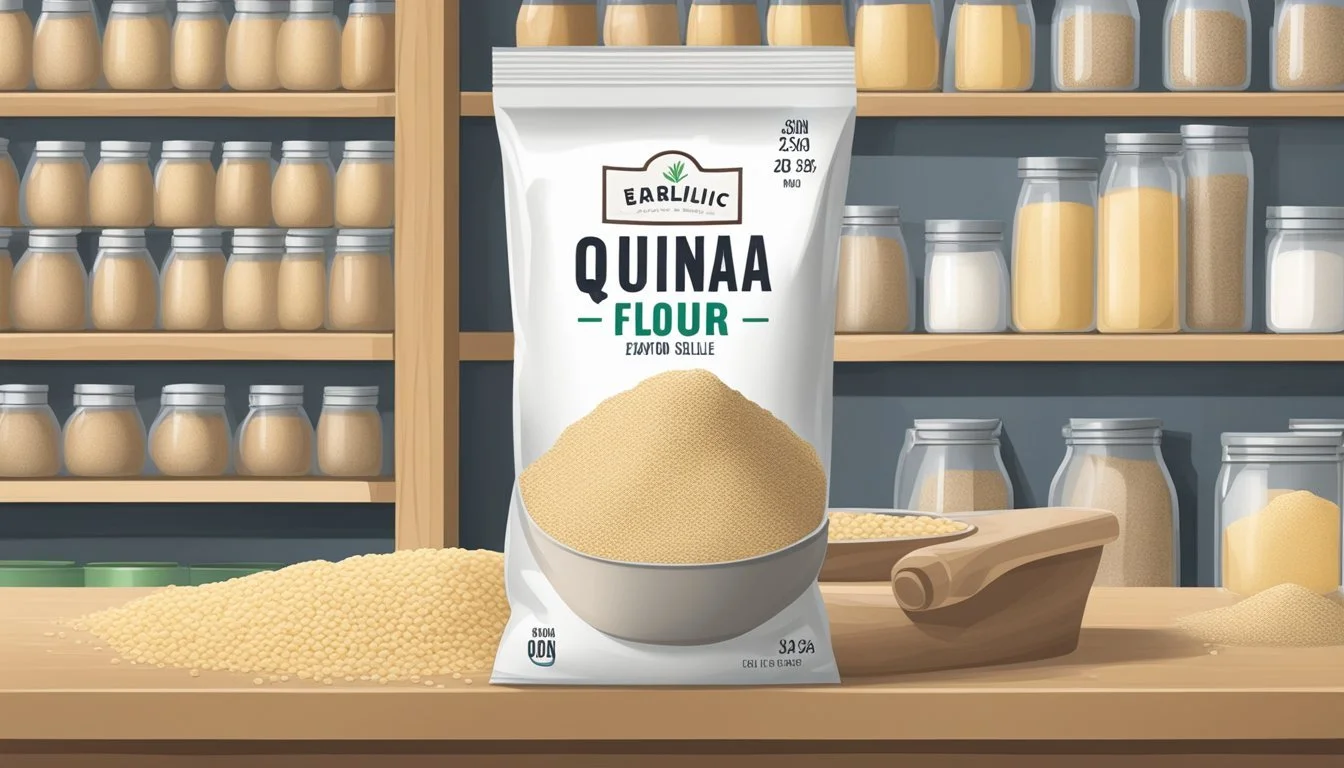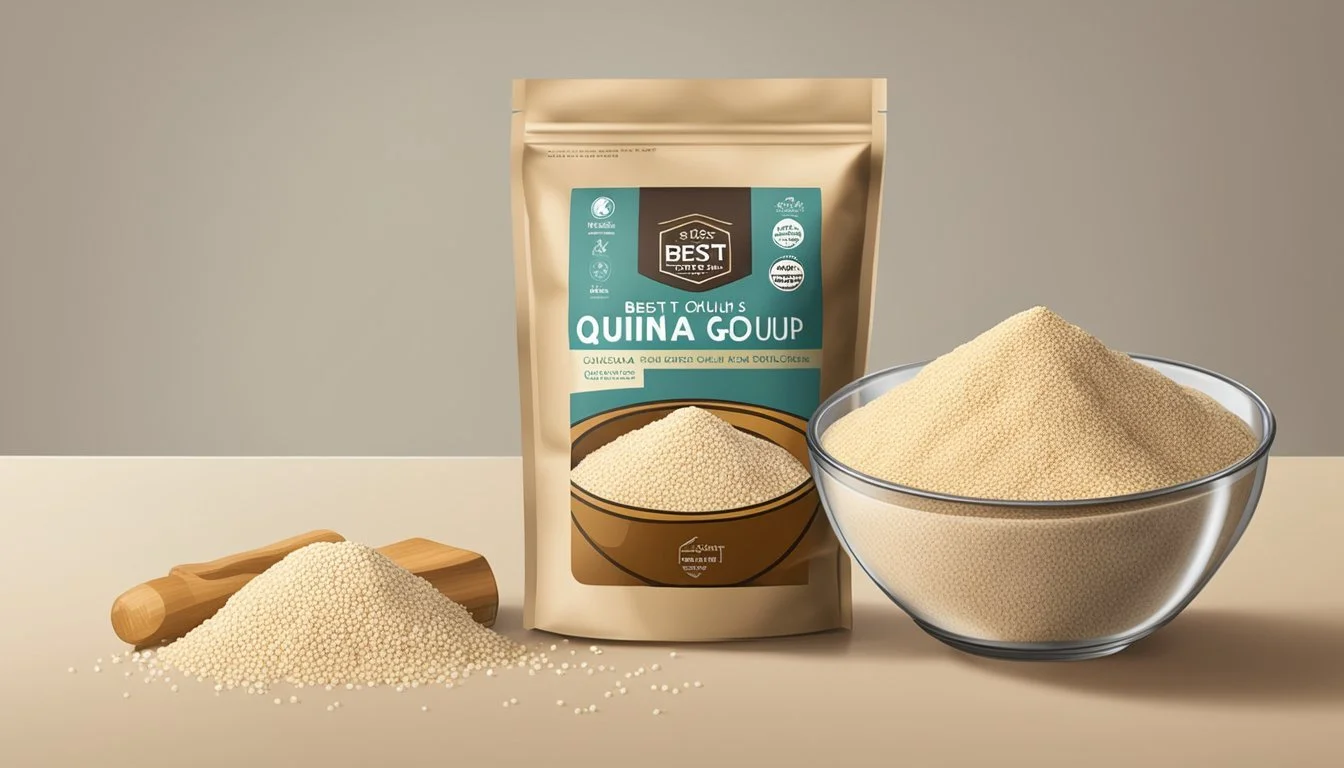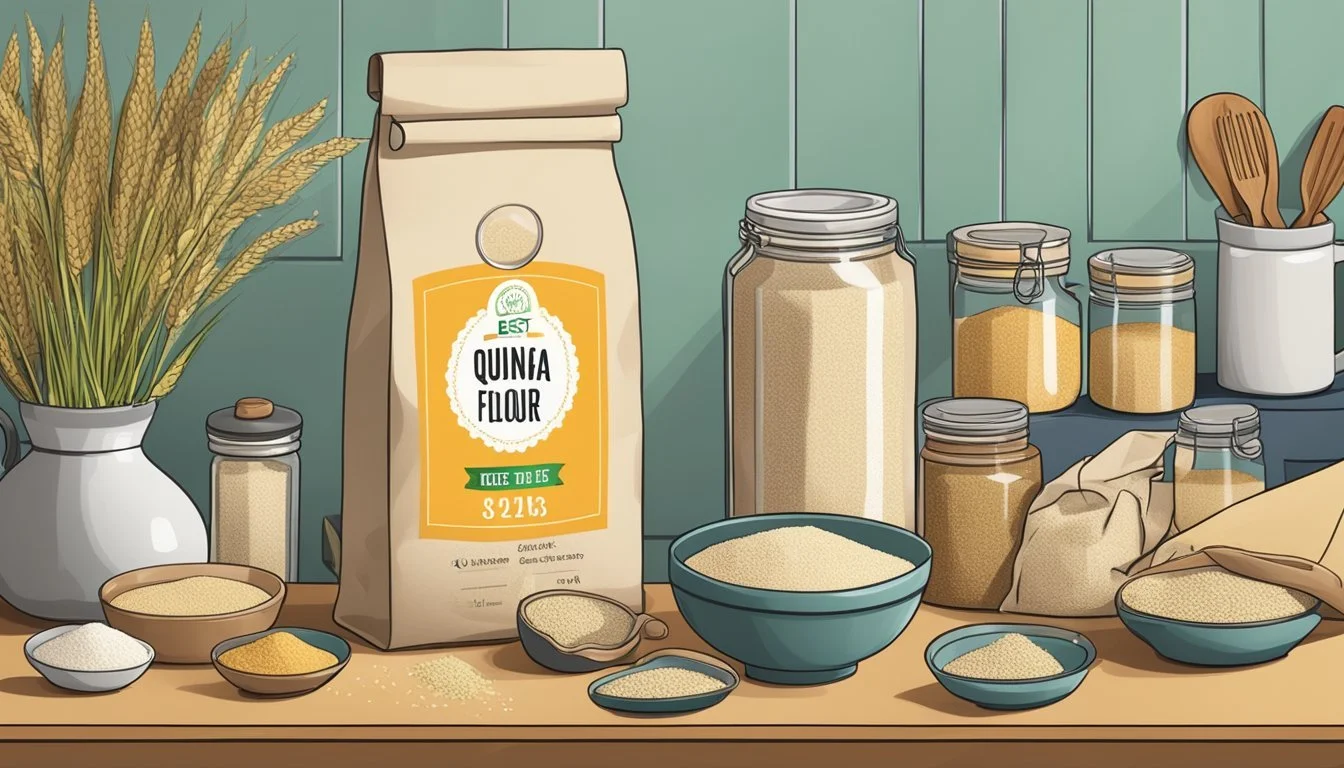How Long Does Quinoa Flour Last?
Shelf Life and Storage Tips
Quinoa flour has become a staple in many health-conscious kitchens due to its high protein content and gluten-free nature. As it's a relatively new ingredient in the culinary world, there are common questions regarding its shelf life and storage. Unopened quinoa flour typically lasts for 6-12 months if stored correctly in a cool, dry place. Once the packaging is opened, the shelf life tends to decrease; however, properly sealing and refrigerating or freezing the flour can extend its usability.
Proper storage is paramount to maintaining the freshness and nutritional value of quinoa flour. Exposure to air, moisture, and heat can negatively impact the flour, leading to potential spoilage or a rancid taste over time. Consumers should be aware of the signs that indicate their quinoa flour may no longer be suitable for consumption, which includes an off smell or taste and any visible signs of mold or pests.
What Is Quinoa?
Quinoa, pronounced as "keen-wah," is a highly regarded superfood that originated in South America. Dating back thousands of years, quinoa was a staple food for the Incas, who cherished it for its endurance-supporting properties. Today, people around the globe appreciate quinoa for its impressive nutrient profile.
Nutritional Value of Quinoa:
Protein: Quinoa is one of the few plant foods considered a complete protein, containing all nine essential amino acids which are crucial for human health.
Fiber: It is rich in dietary fiber, supporting digestive health.
Minerals: Quinoa is a good source of important minerals such as iron, magnesium, and manganese.
Vitamins: It contains B-vitamins such as riboflavin.
Health Benefits:
Gluten-Free: Quinoa is naturally gluten-free, making it a suitable grain alternative for people with gluten intolerance or celiac disease.
Vegan-Friendly: As a plant-based source of complete protein, quinoa fits seamlessly into vegan diets, ensuring adequate protein intake.
Not only does quinoa support a range of dietary needs, but it also offers a subtle, nutty flavor and a satisfying crunch when cooked, which makes it a versatile ingredient in many recipes from salads to breakfast bowls. The seeds of the quinoa plant can also be ground into flour, which brings many of the same benefits to gluten-free baking.
Quinoa Flour Basics
Quinoa flour is a gluten-free alternative to traditional wheat flour, rich in proteins and fibers, making it a versatile choice for various culinary applications.
Defining Quinoa Flour
Quinoa flour is made by grinding quinoa seeds into a fine powder. Unlike wheat flour, it is naturally gluten-free, making it an excellent choice for those with gluten sensitivities or celiac disease. It is derived from an ancient grain that has been a staple in South American cuisine for thousands of years.
Nutritional Profile
Quinoa flour is highly regarded for its nutritional profile. It's a complete protein, containing all nine essential amino acids. In terms of nutrients, quinoa flour offers a substantial amount of fiber and a balanced composition of carbohydrates.
Nutrients Amount in Quinoa Flour Protein High Fiber High Gluten Content None
Culinary Uses
The flour's absence of gluten does not detract from its versatility in the kitchen. It can be used in a wide range of baked goods, from breads and muffins to cakes and cookies. Quinoa flour imparts a subtle, nutty flavor, making it a unique addition to any recipe. Its properties lend well to baking, adding moisture and denseness to the final product.
Common Culinary Uses:
Thickening soups and sauces
Baking cakes, cookies, and bread
Making pancakes and waffles
Storing Quinoa Flour
The longevity of quinoa flour hinges on proper storage techniques, which shield it from moisture, heat, and light. A strategic approach to storage will significantly extend its usability.
Best Practices for Storage
To maximize the shelf life of quinoa flour, one should store it in an airtight container. This barrier prevents exposure to contaminants and reduces the oxidation process. Consistent storage in a cool, dry environment is paramount.
Pantry vs. Refrigerator vs. Freezer
Pantry: Unopened quinoa flour may stay fresh until the best-by date, which typically spans 3 to 8 months from the production date.
Refrigerator: Once open, storing quinoa flour in the refrigerator can preserve it for up to 3 months.
Freezer: For longer storage, the freezer is suitable, keeping the quinoa flour usable for up to 6 months.
Impact of Moisture and Heat
An excess of moisture can lead to spoilage, and high temperatures accelerate the degradation of quinoa flour's nutritional quality. It should be kept away from any direct heat sources, such as stoves or sunlight, as well as areas prone to dampness.
Shelf Life of Quinoa Flour
The durability of quinoa flour is influenced by storage conditions, packaging, and whether it has been opened. Proper storage can significantly impact its freshness and quality.
Unopened Packages
Unopened packages of quinoa flour typically have a shelf life of up to 6 months when stored in a cool, dry place. The expiration date or best by date on the packaging can give consumers a reliable estimate of its longevity.
After Opening
Once opened, quinoa flour should be transferred to an airtight container to maintain quality and extend its shelf life. Refrigerated quinoa flour has a shelf life of up to 3 months, while in the freezer, it can last for up to 6 months without a noticeable decline in freshness.
Signs of Spoilage
Quinoa flour can go bad due to improper storage, moisture, or contamination. Indicators of spoilage include:
Rancidity: A noticeable sour or off smell, which suggests the oils in the flour have gone bad.
Mold Growth: Any visible signs of mold or discoloration.
Changes in texture, such as clumping, which could indicate moisture exposure.
Consumers should regularly check their quinoa flour for these signs and discard any flour that appears to have spoiled.
Preserving Freshness
To maintain the freshness and extend the shelf life of quinoa flour, one must meticulously manage exposure to air, excess humidity, and pests. Selecting the right storage methods is crucial.
Airtight Containers
Storing quinoa flour in an airtight container is essential to prevent oxidation and moisture ingress. Oxygen can accelerate spoilage and can lead to rancidity, while moisture can encourage the growth of mold. A container with a secure seal safeguards the flour against these elements and can also prevent contamination from pests. Storage in a cool, dry place is recommended to further protect the flour's quality.
Freezer Storage Tips
For long-term preservation, one can store quinoa flour in the freezer where it will retain its quality for several months. To avoid freezer burn, which can be caused by air reaching the flour, one should ensure that the flour is packed in heavy-duty, freezer-safe bags or containers. Squeezing out excess air before sealing reduces the risk of freezer burn and maintains the flour's texture upon thawing. It is also vital to label the storage container with the date to monitor shelf life effectively.
Safety and Consumption
The safety and quality of quinoa flour depend on its storage conditions and the detection of rancidity. Several indicators can guide consumers in determining if their quinoa flour remains safe for consumption or if it has become rancid.
Detecting Rancidity
Rancidity in quinoa flour can be detected through:
Smell: Fresh quinoa flour should have a subtle, nutty aroma. A sharp, bitter, or unpleasant smell is a clear indication of rancidity.
Taste: A small taste test can be revealing. Rancid flour tastes sour or stale.
Consumers should look out for any discoloration or clumping, which may also suggest moisture exposure and potential spoilage.
Consuming Expired Quinoa Flour
Quinoa flour often has a printed expiration date, but this is not the sole indicator of its safety:
Before the Expiration Date: If stored properly in a cool, dry place, quinoa flour can last beyond this date without food safety concerns.
After the Expiration Date: Flour past its date may still be safe if there are no signs of rancidity. However, its nutritional quality might degrade.
Consuming quinoa flour that shows signs of spoilage can lead to foodborne illness, so it is crucial to assess it carefully.
Quinoa Flour in Recipes
Quinoa flour is a versatile ingredient in cooking and baking, capable of enhancing recipes with its nutritional value while catering to gluten-free needs. Here, we explore its functionality as a wheat flour substitute and its role in recipe adaptation.
Substituting for Wheat Flour
Quinoa flour can replace wheat flour in many recipes, particularly in baked goods. When substituting:
For baking: Replace up to 50% of wheat flour with quinoa flour to maintain the structure of baked goods.
For cooking: Use a 1:1 ratio in dense and moist recipes like pancakes or muffins where the texture is more forgiving.
Note: Quinoa flour's distinct, nutty taste might alter the flavor profile of the recipe.
Adapting Recipes
Adapting recipes to incorporate quinoa flour often involves slight adjustments:
Hydration: Increase liquid content, as quinoa flour absorbs more moisture.
Baking times: May require reduction due to quinoa's efficient heat conductivity.
Binding: In the absence of gluten, consider binding agents like xanthan gum (how long does xanthan gum last?) for structure.
For each quinoa recipe, trial and error are part of the process to achieve desired results while leveraging quinoa flour's nutritional benefits and unique qualities.
Frequently Asked Questions
This section addresses common inquiries on the shelf life, nutrition, and culinary uses of quinoa flour, providing clear and factual information to guide users in maximizing the benefits and longevity of this versatile ingredient.
Long-Term Storage Queries
When it comes to long-term storage, unopened quinoa flour can typically last for 4-6 months past the date on the packaging if stored in a cool, dry place. Once opened, its shelf life decreases to 3-6 months. To extend this period, one may store quinoa flour in airtight containers, preferably in a refrigerator or freezer.
Nutritional Concerns
Quinoa flour is valued for its high protein content and nutrient density. It is gluten-free and often used as a healthy alternative to traditional wheat flour. Those concerned with maintaining quinoa flour's nutritional integrity should store it away from heat, light, and moisture to prevent the degradation of essential nutrients.
Culinary Questions
Quinoa flour can replace up to 50% of all-purpose flour in many recipes, enhancing dishes with its nutty flavor profile. It's suitable for baking bread, cookies, and pancakes, enriching meals with added protein. As quinoa flour absorbs liquids differently than wheat flour, adjustments in recipes may be necessary.
Additional Resources
When researching the storage and shelf life of quinoa flour, as well as its uses and benefits, the following resources may offer valuable insights:
Cooking and Health Benefits:
For enthusiasts eager to explore quinoa's versatility in the kitchen and its health benefits, which include being a gluten-free alternative suitable for individuals with celiac disease, resources like Cooking Light and Whole Grains Council provide recipes, tips, and detailed nutritional information.
Storage Tips:
Proper storage techniques are crucial for maximizing quinoa flour's shelf life. Websites such as The Kitchn and StillTasty offer extensive guides on food preservation, ensuring quinoa flour remains fresh from 3 to 6 months after opening.
Shelf Life of Quinoa Flour:
Understanding the shelf life and factors that influence it can prevent food waste. Eat By Date provides guidelines on the expiration of grains, including quinoa flour, aiding in effective long-term storage strategies.
Types of Quinoa:
For those interested in different types of quinoa—from white to red to black—resources like Food & Wine delve into each variety's unique qualities and best storage practices.
Guidance for Celiac Disease:
The Celiac Disease Foundation offers resources for individuals requiring gluten-free diets, including information about alternative flours like quinoa and managing cross-contamination in food storage.
Recipes and Nutritional Profiles: Cooking Light, Whole Grains Council
Best Storage Practices: The Kitchn, StillTasty
Expiration Information: Eat By Date
Varietal Differences: Food & Wine
Gluten-Free Living: Celiac Disease Foundation
Each resource listed provides one with a confident, knowledgeable foundation to make informed decisions regarding quinoa flour, bolstering both culinary endeavors and health-conscious living.










